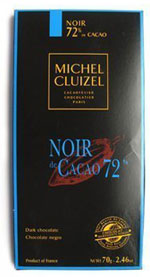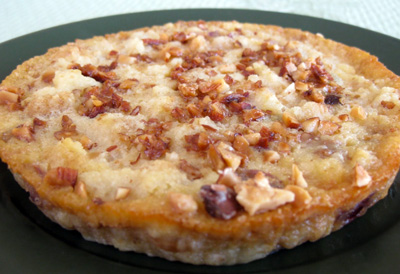 After finding the best milk chocolates
in one of our most popular taste tests, our editors thought it only
fair to find the best dark chocolates on the market. Tasting brands that
ranged in price from $1.79 to $7.99, we were pleasantly surprised when
two of the top five chocolates came from a surprisingly affordable
source -- Trader Joe's!
After finding the best milk chocolates
in one of our most popular taste tests, our editors thought it only
fair to find the best dark chocolates on the market. Tasting brands that
ranged in price from $1.79 to $7.99, we were pleasantly surprised when
two of the top five chocolates came from a surprisingly affordable
source -- Trader Joe's!
Though dark chocolate is officially defined as having at least 35 percent cocoa solids, we tested a range between 50 and 85 percent in our quest for chocolatey perfection. We tested only solid dark chocolate bars -- that means no nuts, no fillings, and no added flavors.
Over the course of two days, our intrepid editors blind-tasted 56 different brands. Check out the slideshow below to discover the top 20 performers (and see below for a complete list of all brands that were tested). Where does your favorite rank?

 So really, is there anything better than a chocolate chip cookie to satisfy a sweet tooth? I didn't think so. There's something so special about a homemade chocolate chip cookie, warm out of the oven. Just think back to when you were a kid making cookies with mom or grandma—they always made pretty amazing cookies from scratch. So don't even think of making the kind from a refrigerator can or boxed mix. You have to agree that homemade is the best hands-down.
So really, is there anything better than a chocolate chip cookie to satisfy a sweet tooth? I didn't think so. There's something so special about a homemade chocolate chip cookie, warm out of the oven. Just think back to when you were a kid making cookies with mom or grandma—they always made pretty amazing cookies from scratch. So don't even think of making the kind from a refrigerator can or boxed mix. You have to agree that homemade is the best hands-down.
 Chocolate, almonds, and marshmallows are one of my all time favorite combinations. Thus, I love, love, love a “rocky road” anything. My kids also love this combo. As well as anything with caramel, blueberry muffins, a fruit tart, any kind of cookie and s’more. S’mores = Summer. They could care less if it is made over a camp fire or on the stove. It is the all time favorite summer dessert and I am embarrassed to say that they eat way more than I care to admit.
Chocolate, almonds, and marshmallows are one of my all time favorite combinations. Thus, I love, love, love a “rocky road” anything. My kids also love this combo. As well as anything with caramel, blueberry muffins, a fruit tart, any kind of cookie and s’more. S’mores = Summer. They could care less if it is made over a camp fire or on the stove. It is the all time favorite summer dessert and I am embarrassed to say that they eat way more than I care to admit. Some of our most childlike instincts turn out to be the best ones: wanting a
Some of our most childlike instincts turn out to be the best ones: wanting a 